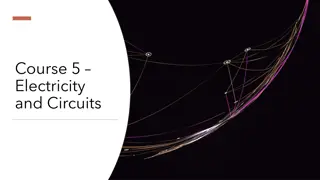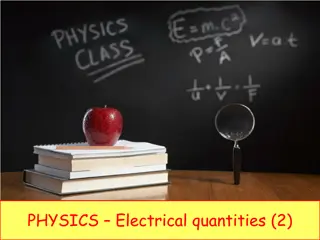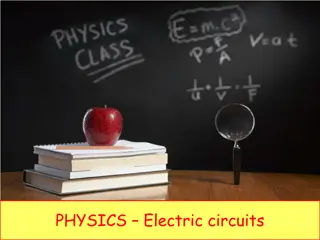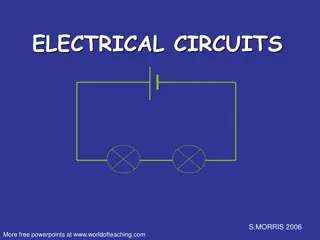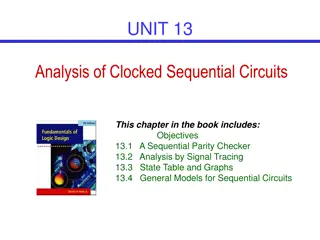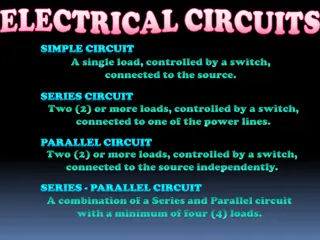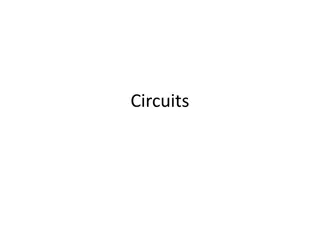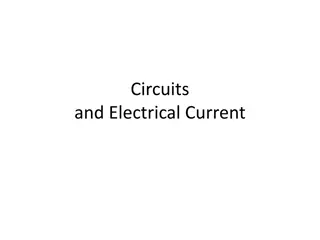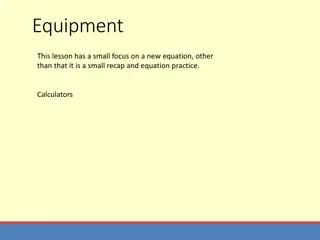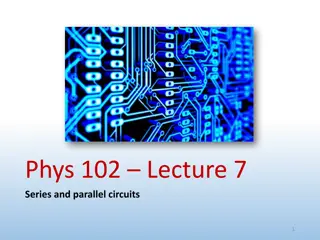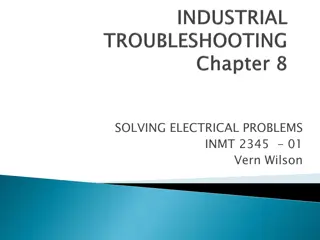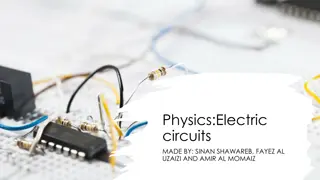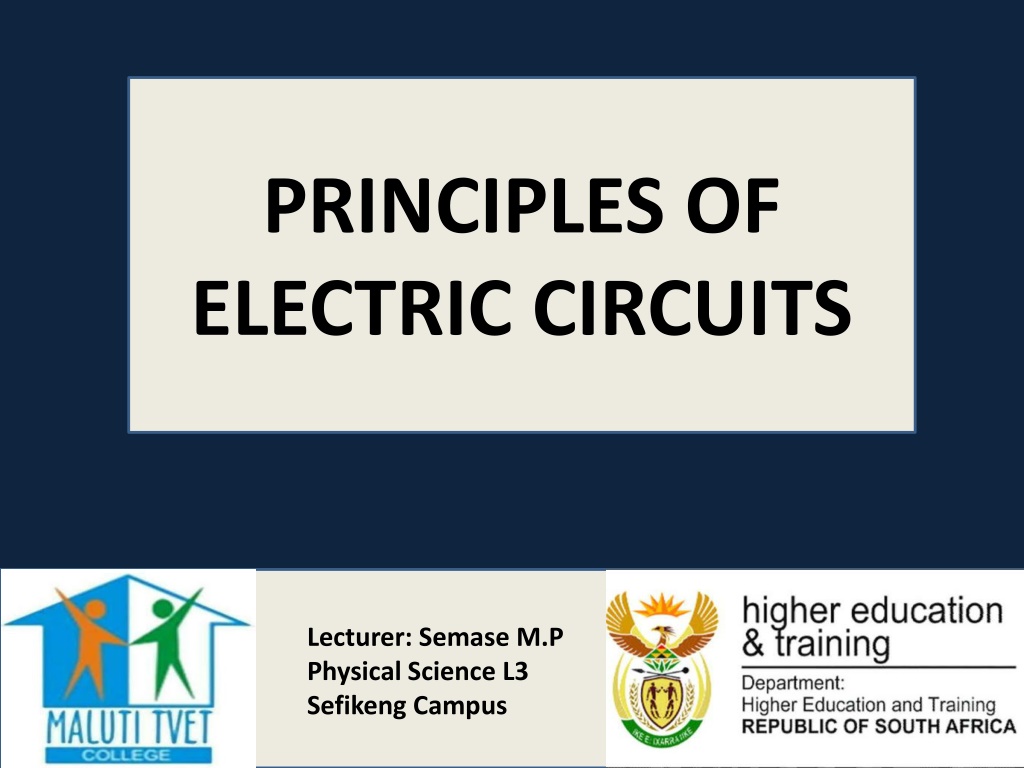
Understanding Ohm's Law and Electric Circuits Fundamentals
Explore the principles of Ohm's Law and electric circuits, including definitions, applications, and the concept of equivalent resistance. Learn how Ohm's Law relates potential difference, current, and resistance, and discover the importance of its application in metallic conductors. Understand how resistors in series and parallel configurations impact the flow of current.
Download Presentation

Please find below an Image/Link to download the presentation.
The content on the website is provided AS IS for your information and personal use only. It may not be sold, licensed, or shared on other websites without obtaining consent from the author. If you encounter any issues during the download, it is possible that the publisher has removed the file from their server.
You are allowed to download the files provided on this website for personal or commercial use, subject to the condition that they are used lawfully. All files are the property of their respective owners.
The content on the website is provided AS IS for your information and personal use only. It may not be sold, licensed, or shared on other websites without obtaining consent from the author.
E N D
Presentation Transcript
PRINCIPLES OF ELECTRIC CIRCUITS Lecturer: Semase M.P Physical Science L3 Sefikeng Campus
Specific Outcome State, analyse and apply principles in electric circuits Learning Outcomes Define and apply Ohm s law Determine the proportionality between current and potential difference Distinguish between resistance, equivalent resistance and internal resistance Identify symbols used for electric circuits
Introduction Ohm s law deals with the relationship between potential difference, current and resistance. In its mathematical form, it enables us to perform calculations to obtain values for any quantities.
Ohms Law Ohm s law states that: The potential difference across the ends of a resistor is directly proportional to the current in the resistor provided the temperature remains constant.
Importance of ohms law Ohm s law is applicable to a very limited range of situations As the statement of the law says, the temperature must remain constant. Thus is a rare situation because all resistors heat up when current flows through them The law is only valid for metallic conductors at very low currents Conductors that obey ohm s law are called ohmic conductors Other types of conductors such as light bulbs, diodes and electrolytes do not obey ohm s law and are called non-ohmic conductors
Equivalent resistance Ohm s law defines resistance as the potential difference required to make a current flow in the resistor. A resistor has a resistance of one ohm if a potential difference of one volt is needed to make a current of one ampere flow in the resistor. Equivalent resistance refers to the combined value of a number of resistors, connected either in series or in parallel. The equivalent resistance is the value of a single resistor that has the same effect as a number of resistors connected together.
Resistors Resistors in series Resistors are connected in series when there is only one path For the current to flow and so the same current flows through all the resistors The equivalent resistance is greater than any individual resistance Resistors in parallel Resistors are connected in parallel when they are connected in such a way that there is more than one path for the current to flow The equivalent resistance is less than that of the smallest individual resistor
Internal resistance Internal resistance refers to the resistance inside a cell or a battery when a current flows through it. Some of the energy that is transferred to the charges as they move through the cell is transferred to heat through the cell. A measure of the energy supplied to the charges is given by the reading on a voltmeter connected to the cell when no current flows When a current flows through the cell, a circuit is closed, a voltmeter connected across the cell reads the potential difference across the circuit The difference between the emf and the potential difference is often called the lost volts.
Summary Ohm s law which, which states that potential difference across the ends of a resistor is directly proportional to the current in the resistor; provided the temperature remains constant. A conductor that obeys ohm s law is called an ohmic conductor. Equivalent resistance is the combined resistance of a number of individual resistors. Resistance is the potential difference needed to make a certain current flow in a conductor Ohm s law can be illustrated experimentally
Summative assessment Define electric current (2) Define potential difference(2) What is meant by resistance(3) Define the ohm and give symbol (3) What is meant by equivalent resistance(2) What is emf(1) What is meant by internal resistance of a battery(2)

